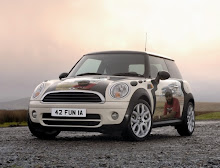COLOURING TECHNIQUESPENCILS2H pencils - Use ordinary pencils to draw and sketch.Colouring pencils - Use pencils to colour drawings and to draw the outline of designs.CARDOverlays/backing - Use card on top of card, you could glue together two different pieces of card and then place a design brief or something similar on the top. The card will be a backing.Colour placed on card - Try shading card with a coloured pencil, use a dark colour of card and shade it with a light shade of pencil. Use the result to back text/writing.Composite drawings - See the examples in class. Drawings constructed from different colours of card can be quite striking.FELT PENS
Brush and fine line pens - see craft knife project Brush and fine line pens - See pen project.SHADINGLine shading - see cylinder examples.
Line Shading - see flat surface examplesFull shading - shade from dark to light, see examplesBLACK PEN - Use a fine black pen to draw designs.PAINTTry colour wash with water based paint.Use an airbrush to spray paint on to the paper.TRANSPARENCIESUse OHP transparencies to build up a drawing.INFORMATION TECHNOLOGYUse a range of I.T. skills including; word processing and graphics software throughout your project.
DRAWING TECHNIQUESSketch with pencils.Sketch with pens (black ink).Use pictograms and graphs.2D Drawings - front or side views.3D Drawings - Isometric - Oblique- Single point perspective and Estimated Perspective - Two point perspectiveExploded Drawings -
1. Exploded Views - 1
2. Exploded Views - 2
3. Exploded Views - 3
4. Exploded Views - 4
draw designs that are ‘in bits’, or ‘taken apart’ so that all the parts of the design can be seen easily.Sectioned views - Draw a sectional view of an idea or solution.Working Drawing - draw the front. side and plan elevations of the final solution.Use a range of lettering stylesAlways add plenty of notes to all your drawings / pictures, including collected research.Dynamic presentations - produce drawings that have parts that move e.g. ‘pop-up card’ designs or parts that rotate.Modelling - produce models of selected designs.Produce a final model of your chosen solution. This must look realistic and be well made.
Sample Models
Card Based Models
Architectural Models
Computer Generated Models
Computer Generated Systems Model (Spreadsheets)
HAVE YOU INCLUDED COMPUTER AIDED DESIGN ?
Thursday, July 23, 2009
Subscribe to:
Post Comments (Atom)





No comments:
Post a Comment